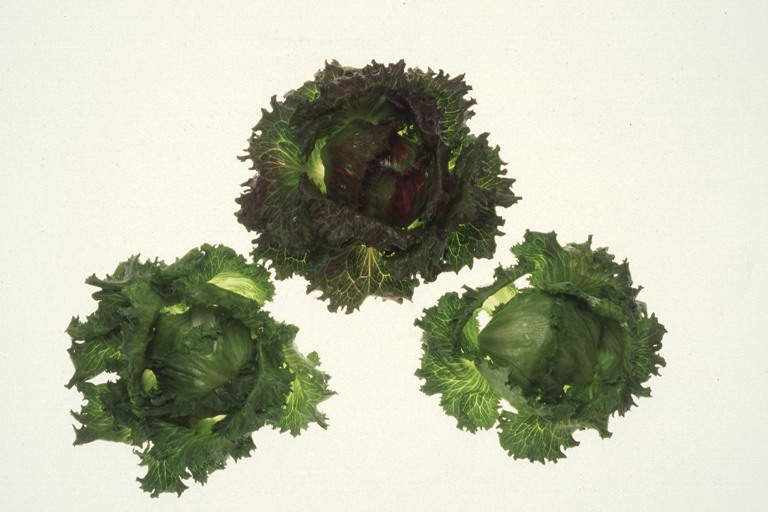January 30, 2013

After scrutinizing a decade's worth of data on foodborne disease outbreaks, federal health officials estimate that produce was the vehicle in close to half of all illnesses and that poultry was the culprit in 19% of all deaths, according to an analysis from the Center for Infectious Disease Research and Policy (CIDRAP), University of Minnesota.
The report released this week by the Centers for Disease Control and Prevention (CDC) covers data from 1998 to 2008. It says that produce of all kinds was implicated in 46% of illnesses and 23% of deaths. A high number of produce-linked norovirus outbreaks was a major factor in the big contribution from produce.
In other findings, the analysts estimated that contaminated meat and poultry together were to blame for 22% of cases and 29% of deaths, while dairy and eggs accounted for 20% of illnesses and 15% of deaths. Fish and shellfish were implicated in 6.4% of illnesses and 6.1% of deaths.
The study was published as an early release from the March issue of Emerging Infectious Diseases.
In a question-and-answer article accompanying the report, the CDC said it is the most comprehensive effort to determine which foods cause illness on the basis of outbreak data, including outbreaks involving "complex foods"—those containing foods from more than one category.
“To the extent that these outbreak-based estimates reflect the commodities associated with all foodborne illness, they indicate that efforts are particularly needed to prevent contamination of produce and poultry,” the report states.
The findings come just a few weeks after the U.S. Food and Drug Administration (FDA) issued its long-awaited draft rule for preventing contamination of produce. The rule is one of the major steps to implement the FDA Food Safety Modernization Act, which was enacted two years ago with the aim of shifting the U.S. food safety system to more of a preventive footing.
More than 4,500 outbreaks
The CDC authors mined data from the agency's Foodborne Disease Outbreak Surveillance System, looking at all outbreaks from 1998, the first year with detailed information on foods, to 2008. There were 13,352 outbreaks with about 272,000 illnesses during that time.
The authors found that 4,887 outbreaks, with about 128,000 illnesses, had an implicated food vehicle and a single cause (pathogen). But they excluded about 300 outbreaks because there was too little information to categorize the food ingredients. They ended up with 4,589 outbreaks that met their criteria.
The team divided foods into three major groups, encompassing 17 commodities, as follows:
Aquatic animals: fish, crustaceans, and mollusks
Land animals: dairy, eggs, beef, game, pork, and poultry
Plants: grains beans, oils-sugars (refined plant foods), and produce, including fruits-nuts, fungi, and leafy, root, sprout, and vine-stalk vegetables
The 4,589 outbreaks identified by the authors included 120,321 illnesses caused by 37 agents. Norovirus caused by far the most outbreaks, 1,419, and illnesses, 41,257, as compared with a median of 29 outbreaks and 1,208 illnesses for all pathogens. The implicated food vehicle was complex in 49% of the outbreaks.
The team estimates that about 51% of foodborne illnesses were related to plant commodities, 42% to land-animal commodities, and 6% to fish and shellfish. Citing a previous CDC estimate of 9.6 million foodborne illness cases per year in the United States, that comes out to 4.9 million, 4.0 million, and 600,000 cases, respectively.
Of the 17 commodities, leafy vegetables led the list for the largest share of illnesses at 17%, but the wide range between the team's low and high estimates indicates that leafy vegetables were often part of complex foods. Next on the list were dairy foods, implicated in 14% of illnesses; fruits and nuts, 12%; and poultry, 10%.
The authors calculated that the outbreaks caused 57,462 hospitalizations. Forty-six percent of those were attributed to land-animal commodities, 41% to plant commodities, and 6% to fish and shellfish. Among specific commodities, dairy foods accounted for the most hospitalizations at 16%, followed by leafy vegetables, poultry, and fruits-nuts.
The total number of deaths was estimated at 1,451. The team calculated that land-animal foods accounted for 43% of these, plant-based foods for 25%, and fish and shellfish for 6%. As noted above, poultry topped the list of single commodities implicated in deaths, with 19%. It was followed by dairy, vine-stalk vegetables, fruits-nuts, and leafy vegetables.
Of the deaths attributed to poultry, most were blamed on listeria (63%) or salmonella (26%). The authors observe that the poultry-linked listeriosis numbers were swelled by three large outbreaks in the 1998-2002 period that were linked to turkey deli meat that was contaminated after cooking.
Concerning the 46% of all illnesses attributed to produce, the authors comment, “The large number of norovirus illnesses was a major driver of this result.” They said a previous study showed that produce-containing foods were the source of about half of norovirus outbreaks with a known simple food vehicle in 2008.
To read more of the CIDRAP report, visit www.cidrap.umn.edu.
You May Also Like



